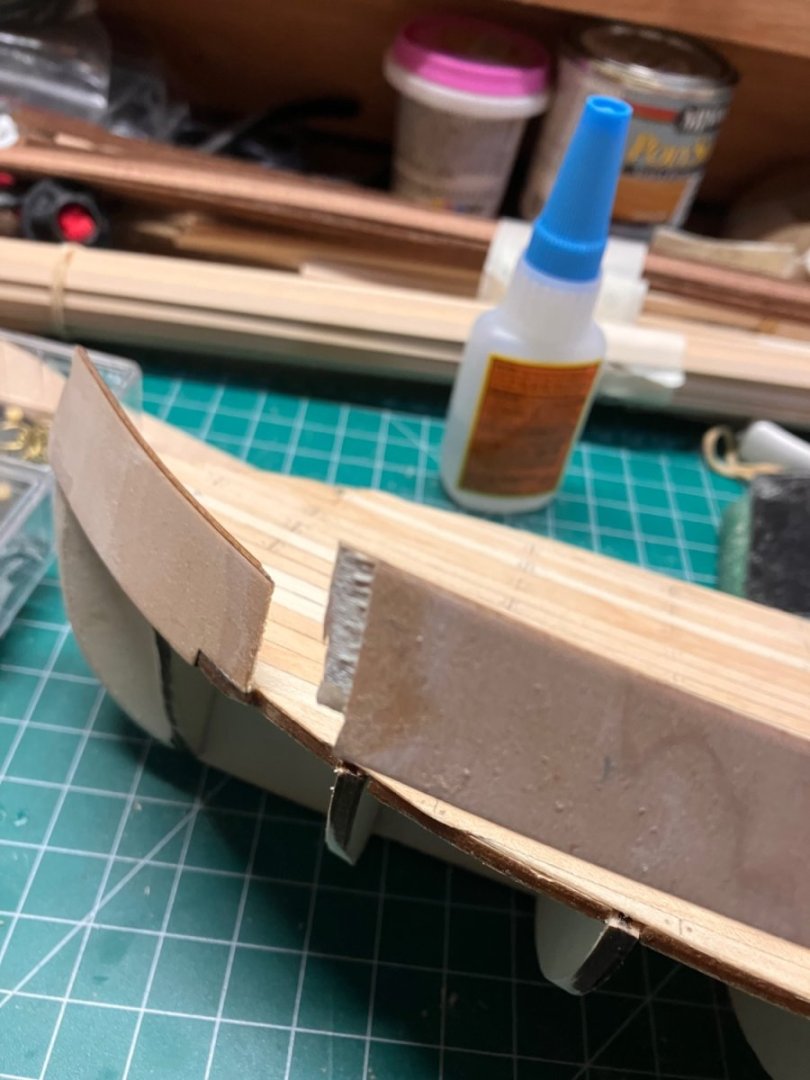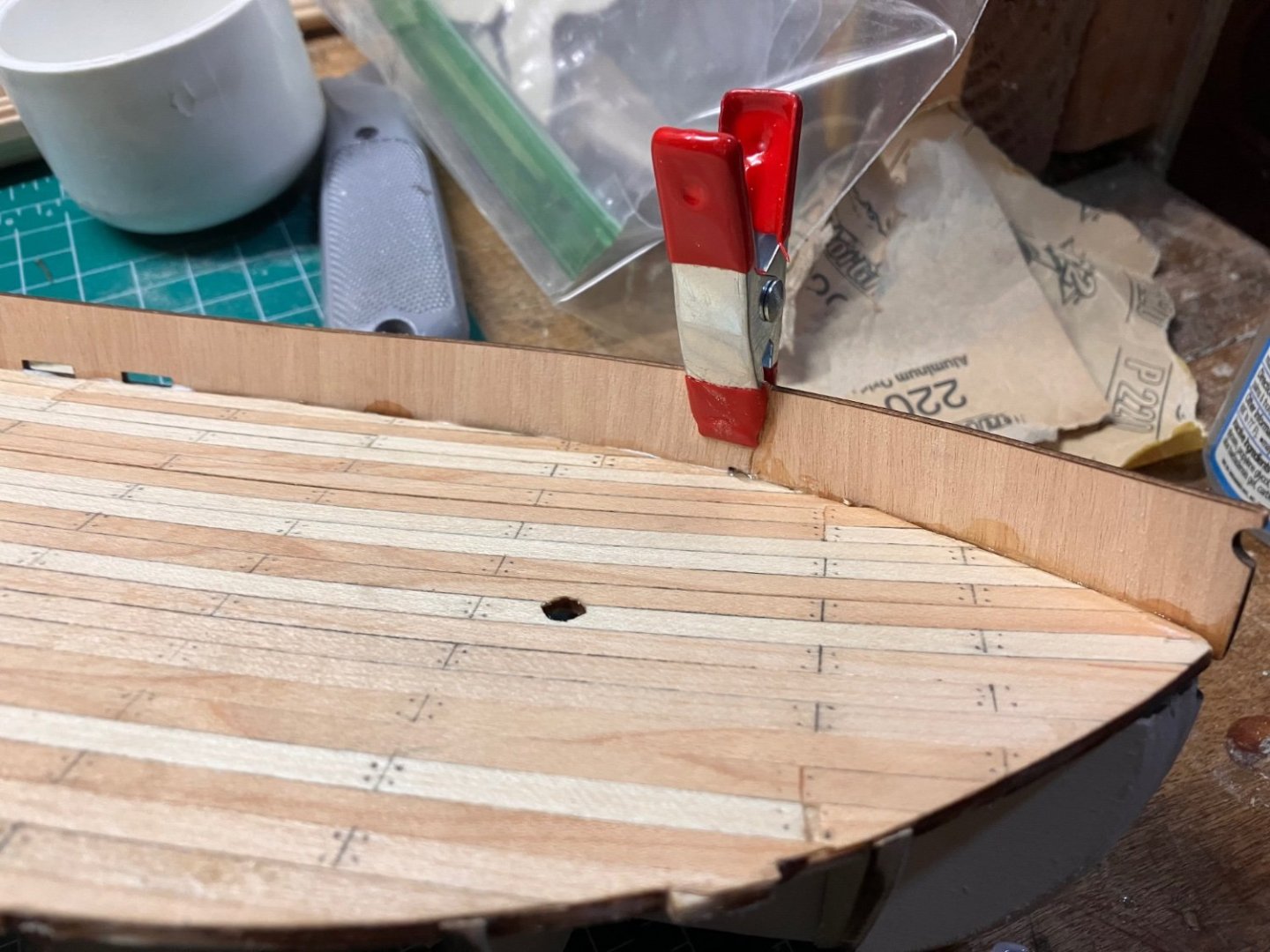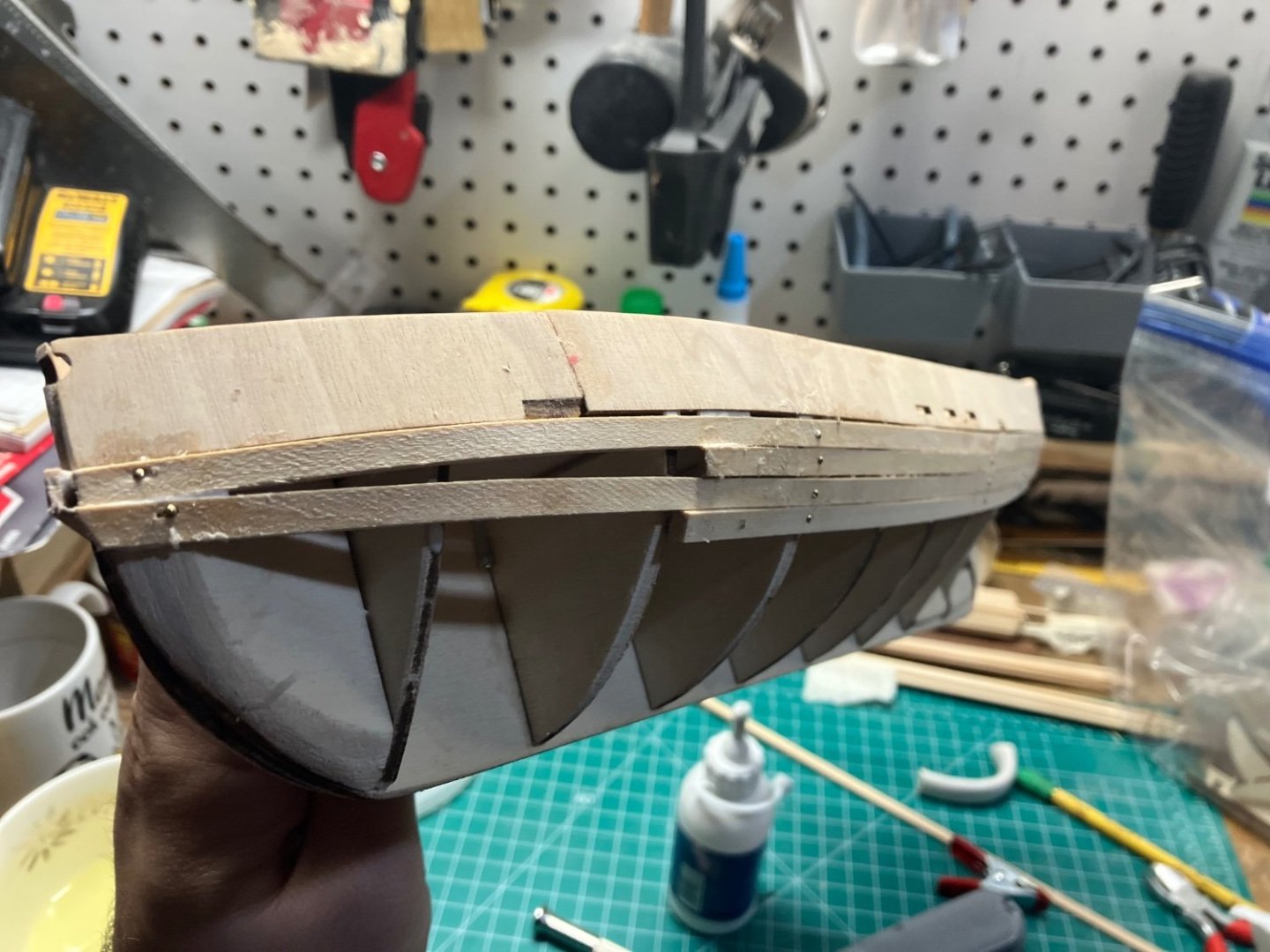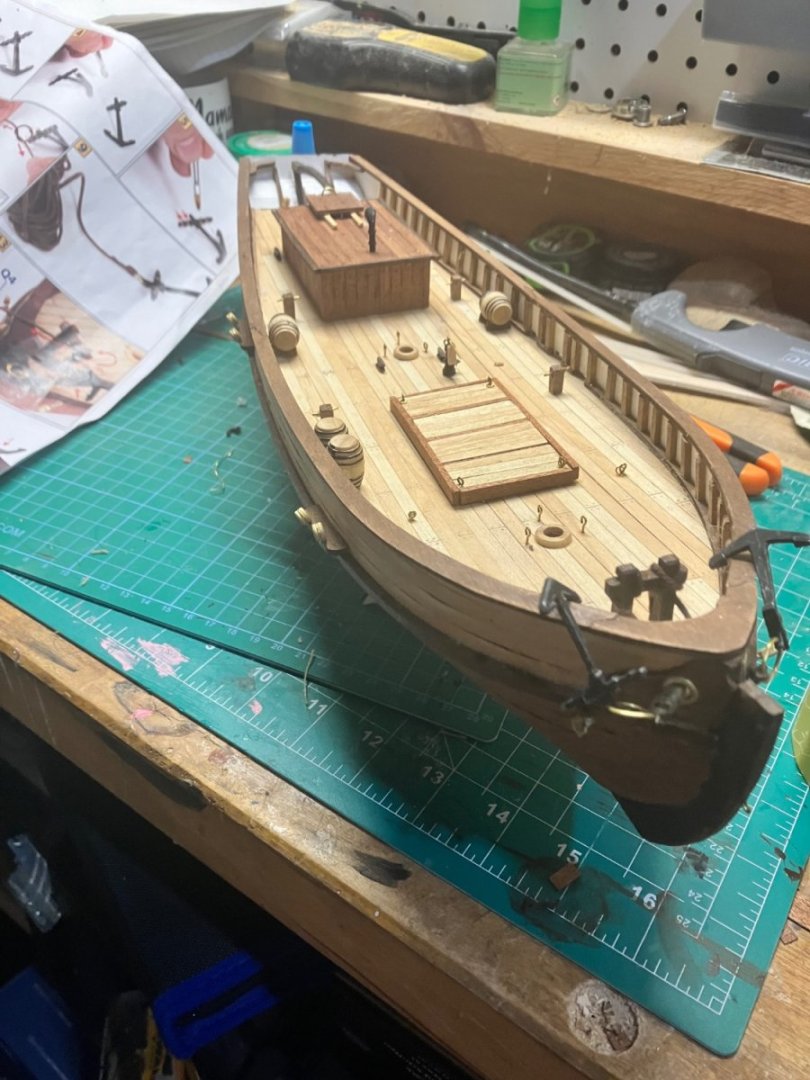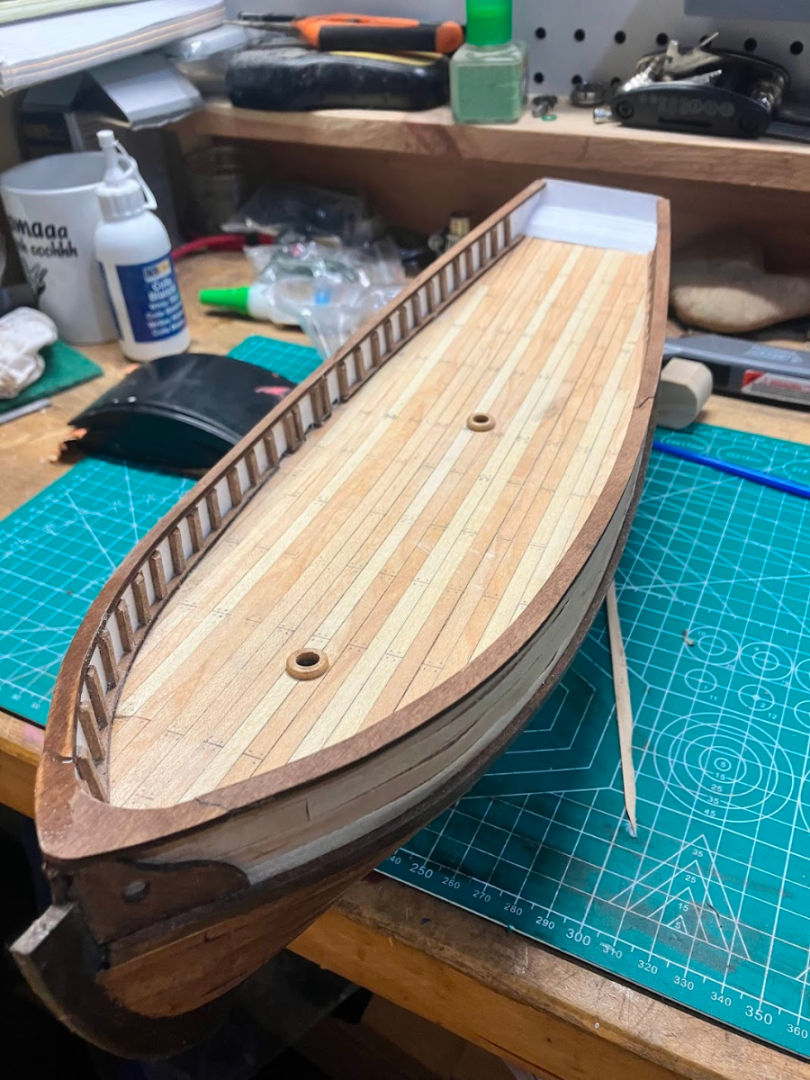
rmccook
Members-
Posts
13 -
Joined
-
Last visited
Recent Profile Visitors
-
 rmccook reacted to a post in a topic:
OcCre HMS Victory Limited edition
rmccook reacted to a post in a topic:
OcCre HMS Victory Limited edition
-
 md1400cs reacted to a post in a topic:
OcCre HMS Victory Limited edition
md1400cs reacted to a post in a topic:
OcCre HMS Victory Limited edition
-
 rmccook reacted to a post in a topic:
Hello from British Columbia!
rmccook reacted to a post in a topic:
Hello from British Columbia!
-
 mtaylor reacted to a post in a topic:
Informative video about 18th Century Sailing Battleships
mtaylor reacted to a post in a topic:
Informative video about 18th Century Sailing Battleships
-
 rmccook reacted to a post in a topic:
Howdy! From Wisconsin, USA!!
rmccook reacted to a post in a topic:
Howdy! From Wisconsin, USA!!
-
 Chikpeas reacted to a post in a topic:
Howdy! From Wisconsin, USA!!
Chikpeas reacted to a post in a topic:
Howdy! From Wisconsin, USA!!
-
 mtaylor reacted to a post in a topic:
Howdy! From Wisconsin, USA!!
mtaylor reacted to a post in a topic:
Howdy! From Wisconsin, USA!!
-
 mtaylor reacted to a post in a topic:
Howdy! From Wisconsin, USA!!
mtaylor reacted to a post in a topic:
Howdy! From Wisconsin, USA!!
-
 mtaylor reacted to a post in a topic:
Howdy! From Wisconsin, USA!!
mtaylor reacted to a post in a topic:
Howdy! From Wisconsin, USA!!
-
 rmccook reacted to a post in a topic:
Informative video about 18th Century Sailing Battleships
rmccook reacted to a post in a topic:
Informative video about 18th Century Sailing Battleships
-
 BETAQDAVE reacted to a post in a topic:
Informative video about 18th Century Sailing Battleships
BETAQDAVE reacted to a post in a topic:
Informative video about 18th Century Sailing Battleships
-
 Keith Black reacted to a post in a topic:
Howdy! From Wisconsin, USA!!
Keith Black reacted to a post in a topic:
Howdy! From Wisconsin, USA!!
-
The bow is tricky and that’s the one area they don’t show very clearly in either the manual or the YouTube videos. And it’s crucial, because if you read ahead, the keel has a bow piece that has to fit in perfectly in that notch and sit flush with the hull. It was the hardest part so far, but sanding, cutting, swearing, regluing, more sanding, more swearing, walking away for a week, etc finally got it in. I’d say Just keep it as neat as possible at the front so it’s all uniform if you do have to make any alterations to make the piece fit.
-
 Chikpeas reacted to a post in a topic:
Howdy! From Wisconsin, USA!!
Chikpeas reacted to a post in a topic:
Howdy! From Wisconsin, USA!!
-
 rmccook reacted to a post in a topic:
Hello from Quebec
rmccook reacted to a post in a topic:
Hello from Quebec
-
 rmccook reacted to a post in a topic:
Hi from South Africa - novice alert!
rmccook reacted to a post in a topic:
Hi from South Africa - novice alert!
-
Mine broke too… the good news is it glues easily… I worried it looked terrible and spent time sanding, etc and only later discovered it’s covered up on the outside and painted and partially obscured on the inside. Same thing with the planking - a second layer is going to go on, so it’s important for it to hold together and be smooth. But, aesthetically, it’s not super important if there are errors. You can slice and splice in planks, as long as it’s sturdy and the correct shape. Now, if you’re like me and you break planks on the second layer, where they are much thinner and delicate, or don’t make clean cuts, which leaves it looking ragged, it’s more of a problem. I had to peel off a number of garbage looking outer layer planks and fit in new ones, particularly on the bow as I tried to fit the keel piece on… it definitely wound up looking a bit patched and I thought I had ruined it… but some obsessive sanding and varnish REALLY goes a long way. I probably won’t post a picture of THAT after seeing the gorgeous work some people do around here, but it looks acceptable to the naked eye, that is not inspecting it too carefully, which most eyes won’t since this model is probably going to live above my desk or workbench. It all *mostly* was okay, but most importantly, now I know what’s important to pay attention to on my next model (don’t ask me about the next one yet, I’ve got to get through the rigging). The other thing I’ve read (here on MSW) is that OcCre has very good customer service and if you do irreparably break/lose something they will be very helpful in replacing. And when it comes to things like planks, copper wires, thread, little eyelet hardware, they seem to have packed a significant number of extras. Even when I had to discard planks I really botched I had plenty to spare and now that I’m down with the hull and deck, I probably have enough leftovers to do another half side of a hull, if I needed to.
-
Informative video about 18th Century Sailing Battleships
rmccook replied to Peanut6's topic in Nautical/Naval History
I was going to post but thought to check if someone had... since you posted, it's been very popular. It's one of the clearest, most concise explanations and answered a lot of questions about how all that fit in such a small space. -
 rmccook reacted to a post in a topic:
Informative video about 18th Century Sailing Battleships
rmccook reacted to a post in a topic:
Informative video about 18th Century Sailing Battleships
-
Welcome! I've just finished the first book of instructions (the hull part) for my Polaris and am stalling work on the mast and rigging. It's a fun kit! I've found OcCre's manual extremely clear and easy to use, but the YouTube series they have for each step has been INCREDIBLY useful. Sometimes you just need a different angle, or watching someone do some tricky little thing that you just can't show in even the most detailed instruction or clear photo. I've also noticed that the videos slightly deviate from the manual, but always in ways that get it done. My biggest piece of advice (as someone barely ahead of you) is that you should not be afraid to make mistakes, because you will make a lot of them, but almost all of them can be fixed with some sanding. AND, I've discovered, most of the mistakes I really worried about ending up being completely inconsequential because they were covered up. I did not take shaping the bulwarks in the bow very seriously and ended up really worrying about it, but by the time the two layers of planking were on, sanded and stained, you'd have no idea something was amiss. It certainly is uneven in its shape in a way that would matter tremendously if it was a real boat trying to sail anywhere, but to the naked eye it can't be seen and it sits levelly in the stand. Same with the bow—really stressed over how the planks were coming together at the front, how it would all feet with the front section of keel, etc. and sanding, a small amount of wood-filler, and stain made my mistakes barely perceptible and now mostly covered by the anchors. Good luck!
-
 rmccook reacted to a post in a topic:
Hello from Tanzania!
rmccook reacted to a post in a topic:
Hello from Tanzania!
-
great looking boats! How did you ship them safely when you went overseas?
-
 rmccook reacted to a post in a topic:
Hello from Tanzania!
rmccook reacted to a post in a topic:
Hello from Tanzania!
-
 rmccook reacted to a post in a topic:
New member
rmccook reacted to a post in a topic:
New member
-
Well, again, it’s definitely not for a beginner. And it’s pretty clearly marketed as for someone with “expert” ability. Having a wider tolerance for authenticity doesn’t mean you’re necessarily a beginner - there’s probably a big part of the model ship market who just enjoys the challenge of putting together a complex project. Good for them, and good for OcCre if they can get $1700 out of them. And if there is some hypothetical random person with $1700 burning a hole in their pocket who sees that kit as their entry point into model ship building… well, someone was going to separate them from their $1700 might as well be OcCre. If they impulsively spend THAT much money on a model ship kit they have no experience doing anything like, it doesn’t sound like they were going to be much of an asset to the community anyway - they were just as likely to stumble into a sporting good store and buy a set of golf clubs or something. Frankly, if it keeps a model ship kit company in business seems fine to me. But I also think what’s really going on, if you read the marketing material, the justification for the price seems to be the “exclusivity” of it - the limited quantity and the numbering of each model, accompanied by a coin, etc. I find people who are interested in that sort of thing completely mysterious, but there are plenty of people who LOVE the idea. It doesn’t appeal to me, for a variety of reasons, but mainly the open hull, but I think it’s for people who have enjoyed OcCre kits before, want a complex challenge and are motivated by the collectors item shtick.
-
Would it really be authentic if it showed up perfectly built and no need for reworking? I mean, what's more authentic than a British warship that turns out from the shipyard with questionable construction technique, incorrect fittings and poor quality materials? They should include a scale Admiralty inspector, with little notes stuffed in his back pocket looking the other way and then you can call any problems with hatches, sails and pins authentic! $1700 kit price and 6,000 pieces... it's not for beginners.
-
This was very helpful advice for.a first time wooden model ship painter -- I was very frustrated with the look of the first application. Admittedly it was cheap acrylic, but I was wondering how much improvement I would really see from purchasing another higher-end brand for such a tiny area (it IS a model shop after all)... sanding and a second coat improved the look enormously. As someone who has painted with oils (artistically, not models) I wonder whether gesso would work... it might be overkill, but if you happen to have it, as I do...? I would also love thoughts from some veterans on taping off before painting. Maybe I should start another thread, but it goes along with surface preparation. In short, the instructions I was using showed masking tape, and, again, from non-modelling experience, I never find it that effective but went along with it. For some of the straight lines I used some pinstripe fine line tape... not surprisingly, the paint seeped under the masking tape, leaving an irregular edge. The pinstripe paint worked like a charm, but is a little trickier to use on a gentle curve. I fixed the problem with a little careful freehand touching up, but it seems that applying masking tape to a surface consisting of planks that are not perfectly even will always lead to seeping... is there a preferred taping method? Better sanding? Would sealed wood keep the paint from seeping? Thoughts and I'm happy to take this to a new thread...
-
New member with questions about first kit options
rmccook replied to HeyIwanttolearn's topic in New member Introductions
I'm also a newcomer and I was given my first kit as a gift, so I didn't have a choice in the matter, but I am building OCCRE's Polaris... I've found the instructions very clear, the required tools to be things that I already possess or can easily (and cheaply acquire) but most importantly, there is an extremely useful YouTube series that shows everything in very good, simple detail and has helped me enormously. I'm very happy with the way my boat is progressing—there have been stumbles, but it's a simple enough model that I think (so far) they're easily remedied. And it's been an encouraging enough experience that I am interested in doing more model-building. One of the things I like about this model is that it is a serious step-up in sophistication and difficulty than anything I have done before, but the overall model is still pretty simple—especially compared to some of the gorgeous complicated projects here. Below is a some recent photo of where I'm at... I think it cost about $100USD. The only really notable potential downside, which I was only aware of after coming here and reading build logs and reviews is that, perhaps, the material quality isn't the greatest. I've had a couple of pieces snap, and some outer planking be so fragile it was difficult to cut, resulting in some complications. I had chalked that all up to my own incompetence and dull knives, but now I wonder if it wasn't really attributable to the quality of the material. But none of it has been something I couldn't repair or fix. All of THAT said, if I had been aware of Vanguard "novice" kits, and if I had been the one selecting the kit, I might have gone with one of those. I've read the directions for those and they appear to be at least as thorough and the models are similarly sophisticated-yet-doable. The Ranger, for instance, looks very similar, but is much prettier. -
rmccook started following USS New York by threebs - FINISHED - 74 gun ship of the line
-
Hiya, I'm a new member and I'm very interested in what I've seen here so far! I'm new to models—at least as an adult. I did not particularly enjoy them as a kid, but as I've grown up I've developed a real interest in woodworking, art (painting and drawing) and doing crafty things in general. What I used to find tedious and frustrating is now calming and relaxing. Besides those interests, I'm a fan of Aubrey/Maturin—again, as a kid I found them tedious and frustrating and now I love it. I also love sailing real boats (and, unlike the other things, I have since I was a kid.) Last year, in the middle of a re-read of a Aubrery/Maturin book, I was googling some obscure sail reference and was searching for photos or diagrams of the HMS Surprise and thought to search for models as well... a few days later, my Instagram feed started showing me ads for Occre models—creepy, but highly accurate! Amused/bemused by the accuracy of the algorithm in knowing what I was interested in, I showed one ad to my wife and when my birthday rolled around, she and my kids proudly presented me with the Occre Polaris. And, as disturbed as I am at Instagram for leading me to the models, I've absolutely loved working on it. I started in January, took a break for the warm months and am back at it. I've completed the hull and am starting work on the deck and am vaguely dreading the rigging. I'm considering a log, but there's nothing particularly extraordinary about my build and I haven't documented it well thus far... but I will say that I'm finding the Occre Polaris a perfect thing to start with. It's much more challenging than any plastic model, but there is nothing that isn't doable, nothing that can't be done with tools that a reasonably well-equipped home handyman/hobbyist wouldn't have mostly on hand anyway, the instructions are clear and there is a YouTube series demonstrating everything. I think one day I would like to build a small craft of my own—and while it's a lot more pricey and requires more space, I think some of the plans I'm looking at for that are actually less complex than the model plans I currently have. I'll wait until I finish this model before I say if I'll do another, but I'm thoroughly enjoying this one. I've made a few errors, most of which I stressed over before discovering that they really didn't matter as they were easily patched or covered up in later steps. I've got quite a bit of work left to do, and I don't want to jinx myself, as I could always not finish it, but I do think the end is in sight (as in, it is very likely that the model will be finished). With that caveat, as a beginner still in the process, I would say a helpful piece of advice is to just keep plowing ahead—at least on a simple-ish model like Polaris, most mistakes seem pretty solvable by some sanding and paint. Oh, and I suppose an understanding that, while perfection is desired, it's okay if you don't get it all perfect on your first model. I, for example, botched the bow—I did not nail the sanding and shaping of the reinforcements under the hull that give the front of the boat the right shape. I got it pretty well—if it was a real boat, it would cut through the water, but when I applied the planking, the shape was off enough that it made the planking uneven and the gap for the keel piece at the front was ragged and very un-seaworthy. And since it wasn't a perfect fit at the front, the false keel didn't meet up with the sternpost perfectly at the back. But after some thought—and some impulsive stabs as well—I got it to fit pretty well... I pulled up some of the second layer of planking and patched in new pieces... It is definitely noticeable if you look at it closely, but sanding and varnish covered a lot of the sin. And, the other option was to not finish. I've found all your models inspiring and your tips and suggestions for tools and supplies helpful.
About us
Modelshipworld - Advancing Ship Modeling through Research
SSL Secured
Your security is important for us so this Website is SSL-Secured
NRG Mailing Address
Nautical Research Guild
237 South Lincoln Street
Westmont IL, 60559-1917
Model Ship World ® and the MSW logo are Registered Trademarks, and belong to the Nautical Research Guild (United States Patent and Trademark Office: No. 6,929,264 & No. 6,929,274, registered Dec. 20, 2022)
Helpful Links
About the NRG
If you enjoy building ship models that are historically accurate as well as beautiful, then The Nautical Research Guild (NRG) is just right for you.
The Guild is a non-profit educational organization whose mission is to “Advance Ship Modeling Through Research”. We provide support to our members in their efforts to raise the quality of their model ships.
The Nautical Research Guild has published our world-renowned quarterly magazine, The Nautical Research Journal, since 1955. The pages of the Journal are full of articles by accomplished ship modelers who show you how they create those exquisite details on their models, and by maritime historians who show you the correct details to build. The Journal is available in both print and digital editions. Go to the NRG web site (www.thenrg.org) to download a complimentary digital copy of the Journal. The NRG also publishes plan sets, books and compilations of back issues of the Journal and the former Ships in Scale and Model Ship Builder magazines.



